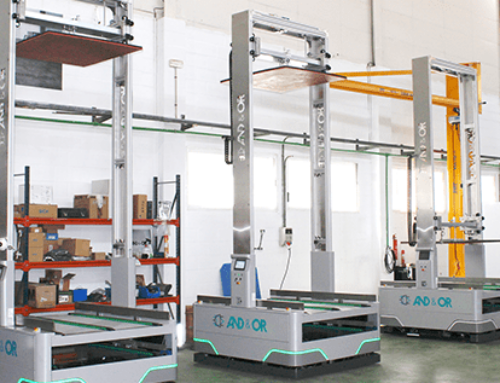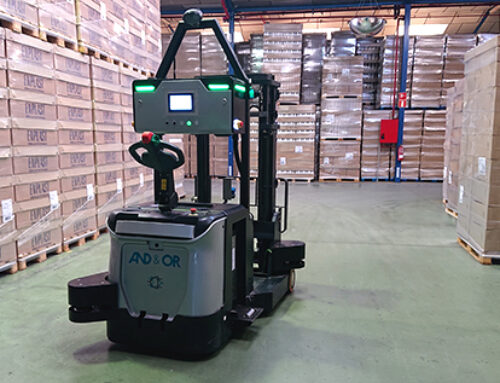
An AMR, or Autonomous Vehicle, is a robot in which operation occurs without direct driver intervention or pre-configured scripts to control steering, acceleration, and braking.
From automated to autonomous systems: What is the difference?
Currently, the terms automated and autonomous are frequently used, and their meanings are often confused and interchanged, but it must be clear that they are different concepts.
- Automated machine: can perform a defined set of tasks following specific instructions with minimal human intervention.
- Autonomous machine: it has intelligence to make decisions in new or unexpected situations. These machines may have the ability to learn as they encounter new situations.
AMR vs AGV
Autonomous Mobile Robots (AMRs) and Automated Guided Vehicles (AGVs) are also often confused. Each system operates with different technology, and therefore has different capabilities and applications.
An AMR is a robot in which operation occurs without direct driver intervention or pre-configured scripts to control steering, acceleration, and braking.
Within an industrial setting, AMR autonomous mobile robot use laser-based navigation and perception algorithms to move dynamically through the facility, free of infrastructure. Machine learning capabilities allow the robot to become more efficient and accurate as it encounters new situations.
AGV automated guided vehicle is an unmanned vehicle that is controlled by pre-programmed software to move materials around a facility. AGVs are based on guidance devices such as magnetic tape, beacons or QR codes that allow the vehicle to move along fixed paths in a controlled space. Lasers and sensors detect obstacles in your path and act on the vehicle to bring it to a stop automatically.

Figure 1. Comparison of AGV installation with physical guidance (left) with respect to AMR (right).
We compare the main characteristics that differentiate an AGV from an AMR:
1-. FLEXIBILITY AND VERSATILITY
AGVs need fixed installations. They follow predefined paths using beacons, QR codes or magnetic tape. Compared to AMRs that do not require external infrastructure for navigation, which makes implementation simple, fast and flexible. Therefore, these facilities do not require maintenance.
In addition, AMRs have the ability to dynamically avoid and move around obstacles to continue to the destination, reducing downtime. No human interaction required.
2-. EASILY SCALABLE
AGVs can be added if the facility supports the necessary infrastructure requirements. Future expansions and lay-out changes must be planned.
For autonomous mobile robots (AMR) no infrastructure renovations or facility planning for future expansions or modifications are required. The software is capable of adding new vehicles that support the existing ones, based on the same previously configured work rules or performing new tasks in collaboration.
3-. INTELLIGENT
In AGVs due to the necessary infrastructure, intelligence is not required. AMRs, by contrast, are intelligent vehicles.
Onboard intelligence allows AMRs to adapt to changes in the environment. Machine learning collects data and updates the shared fleet map with the learned parameters.
AMRs learn which routes are the fastest and can take the optimal routes, even in unpredictable environments.
4-. USABILITY
AGVs are designed to perform simple tasks, but are rigid to set up and operate, and more complex and expensive.
For AMRs, the implementation includes an initial mapping setup and then setting up zones and points of interest on the map in the fleet manager.
Changes to production lines or layout layouts are easily implemented.







Leave A Comment